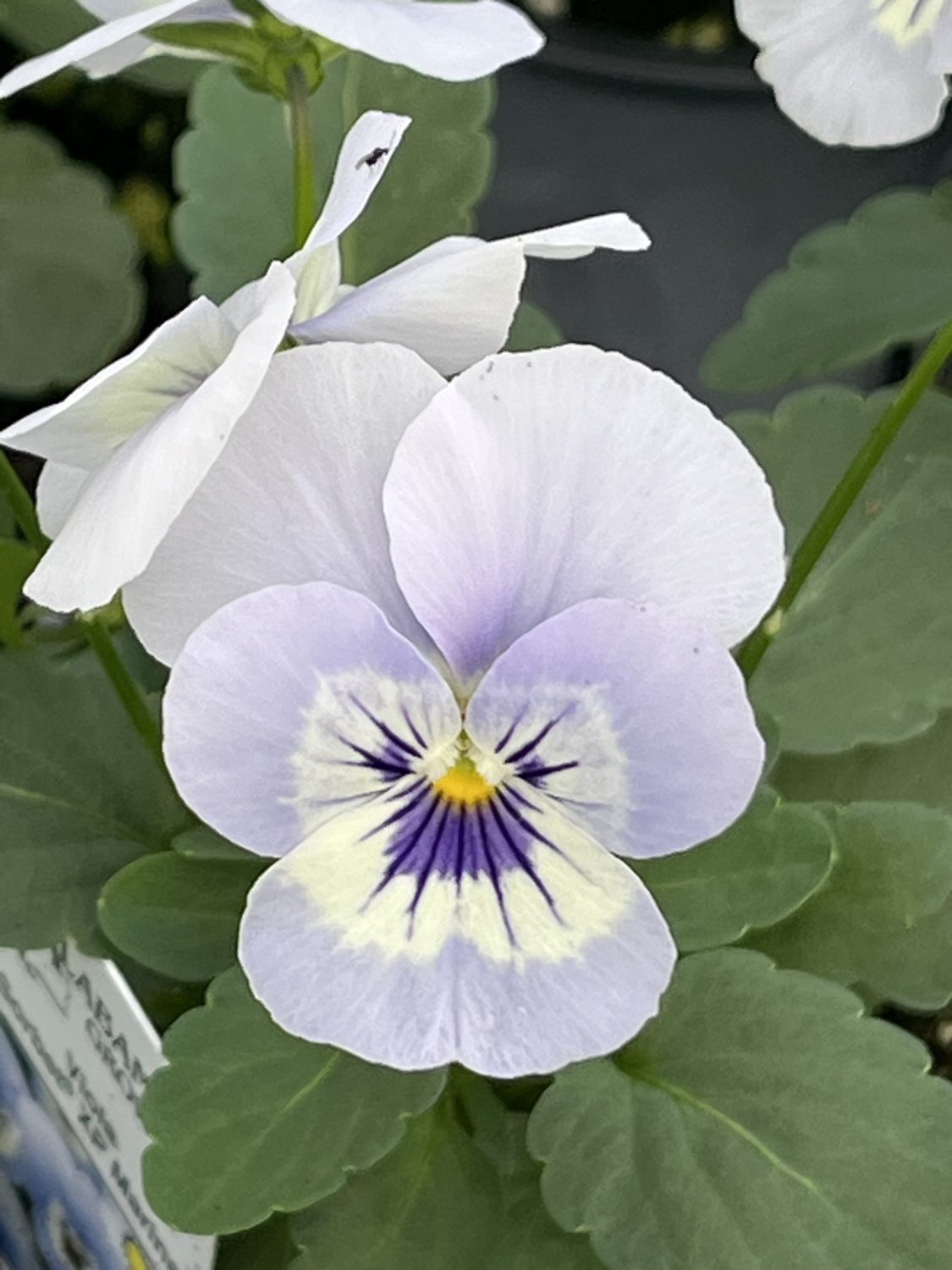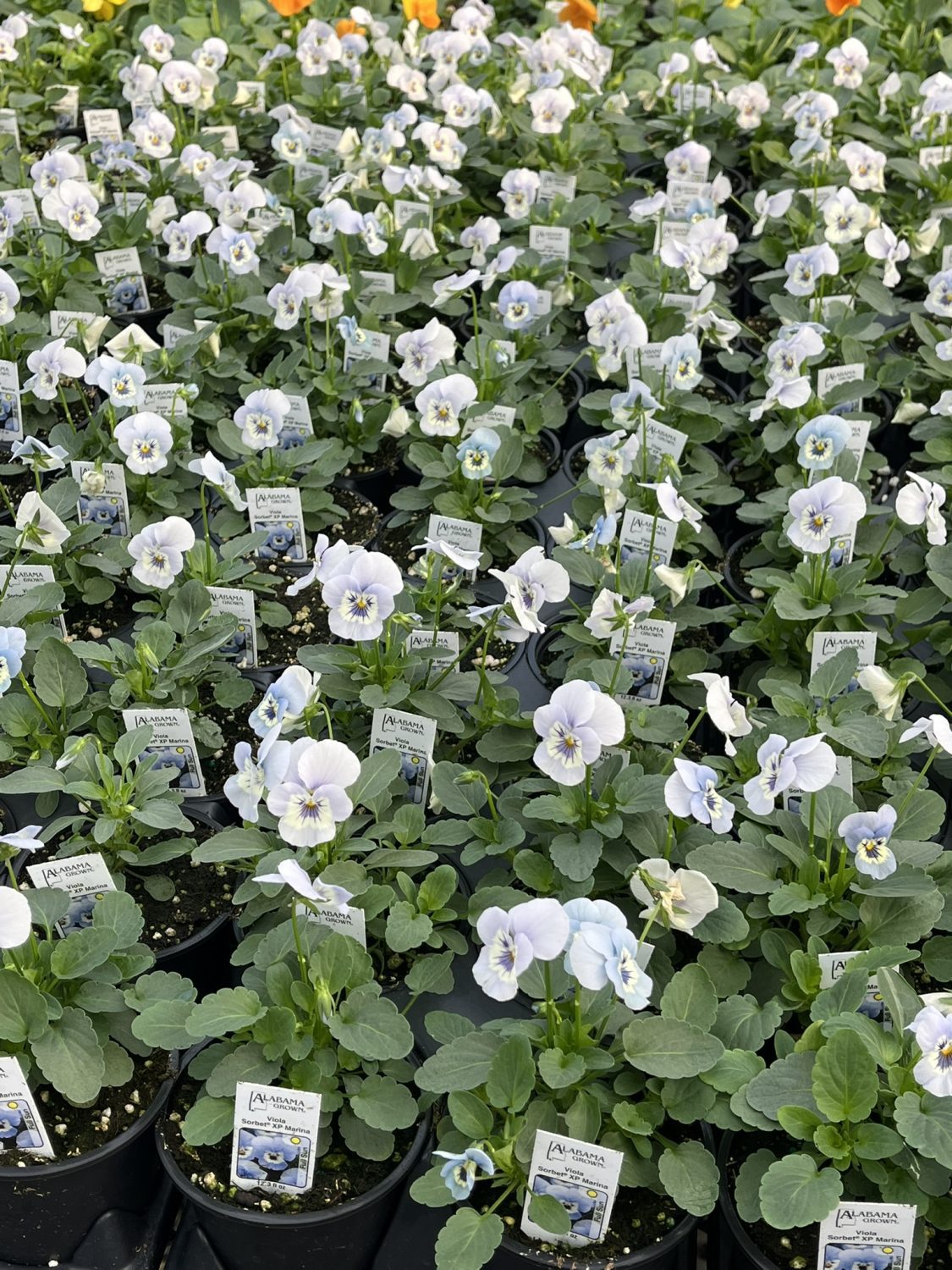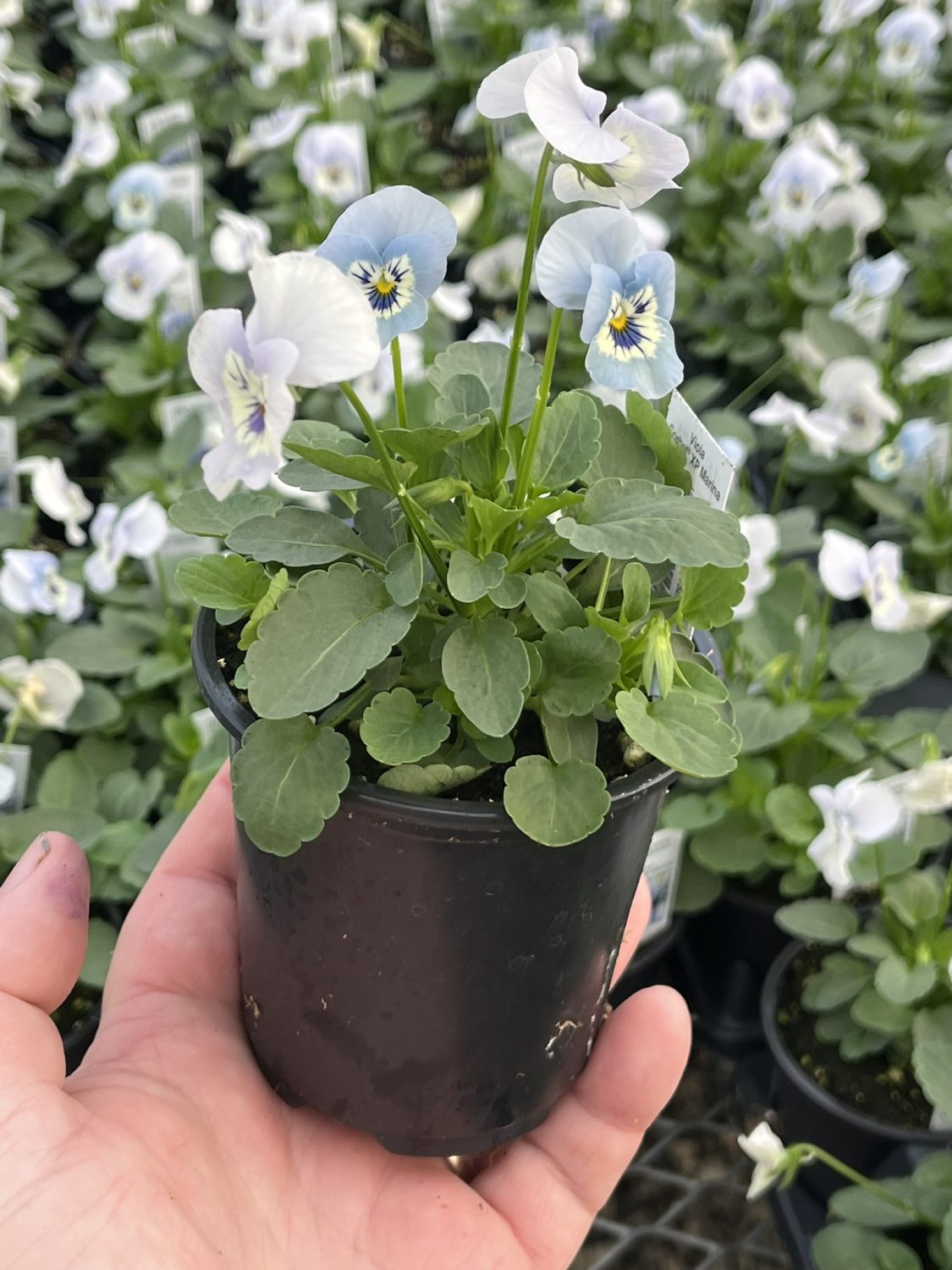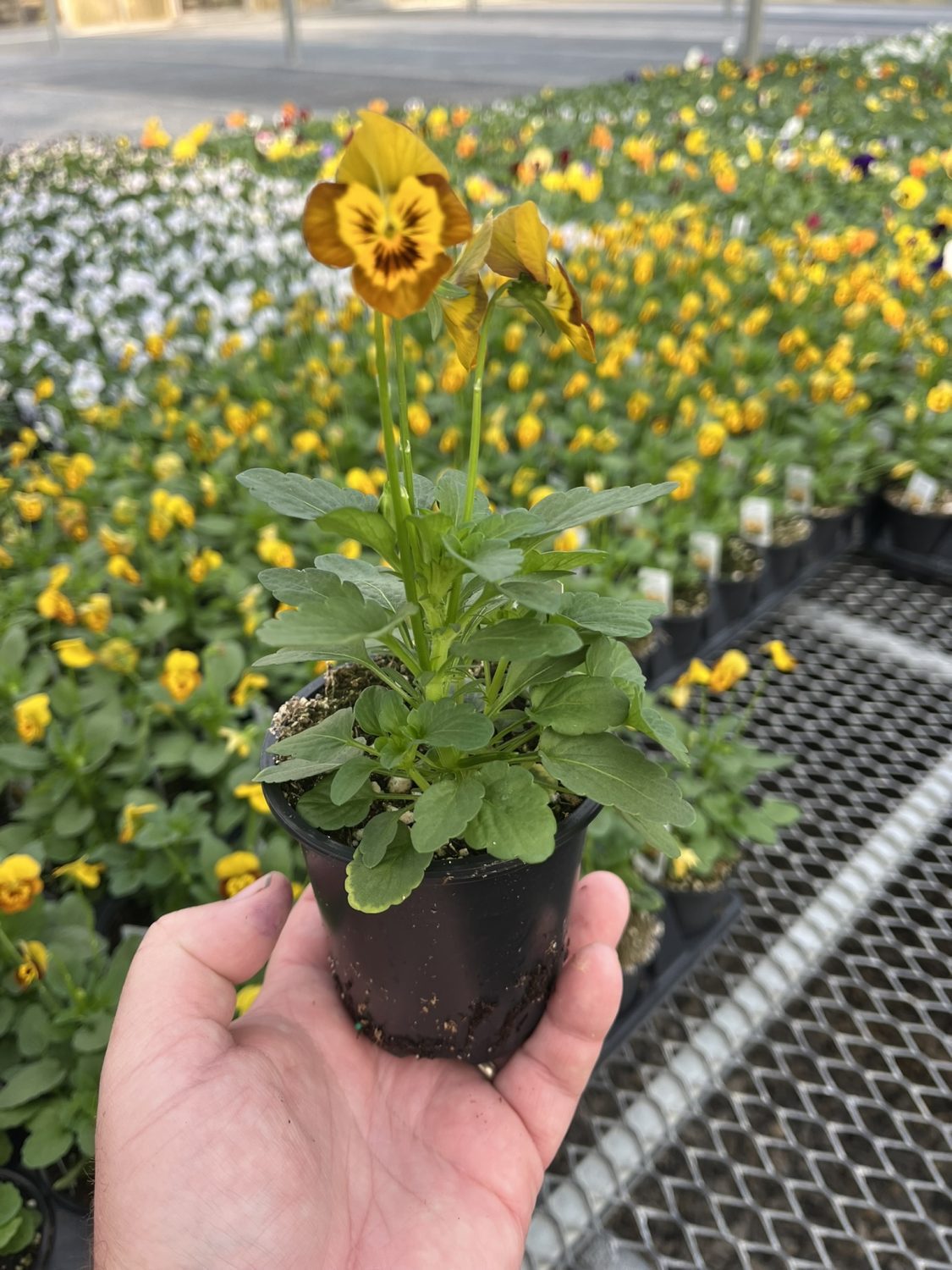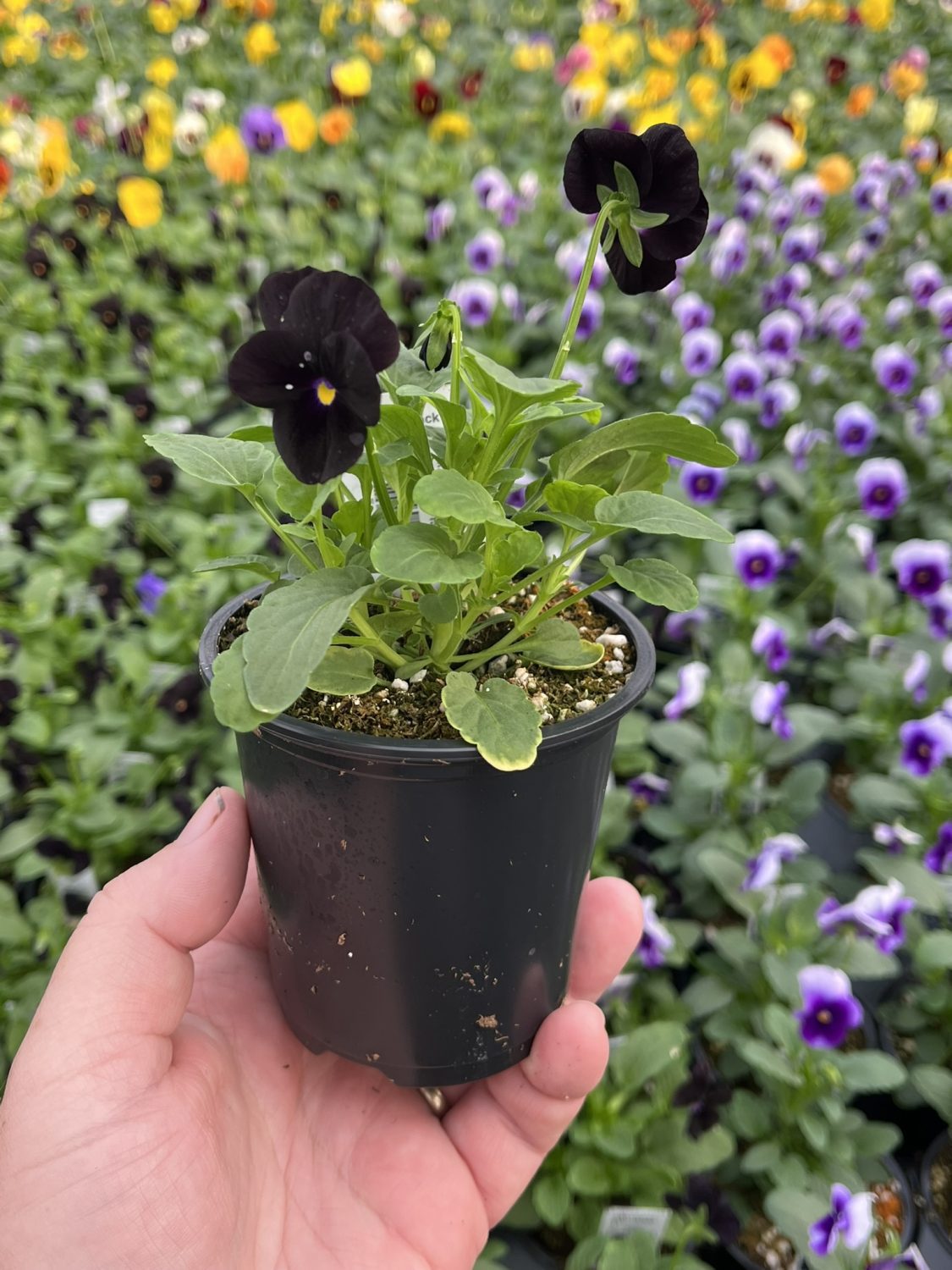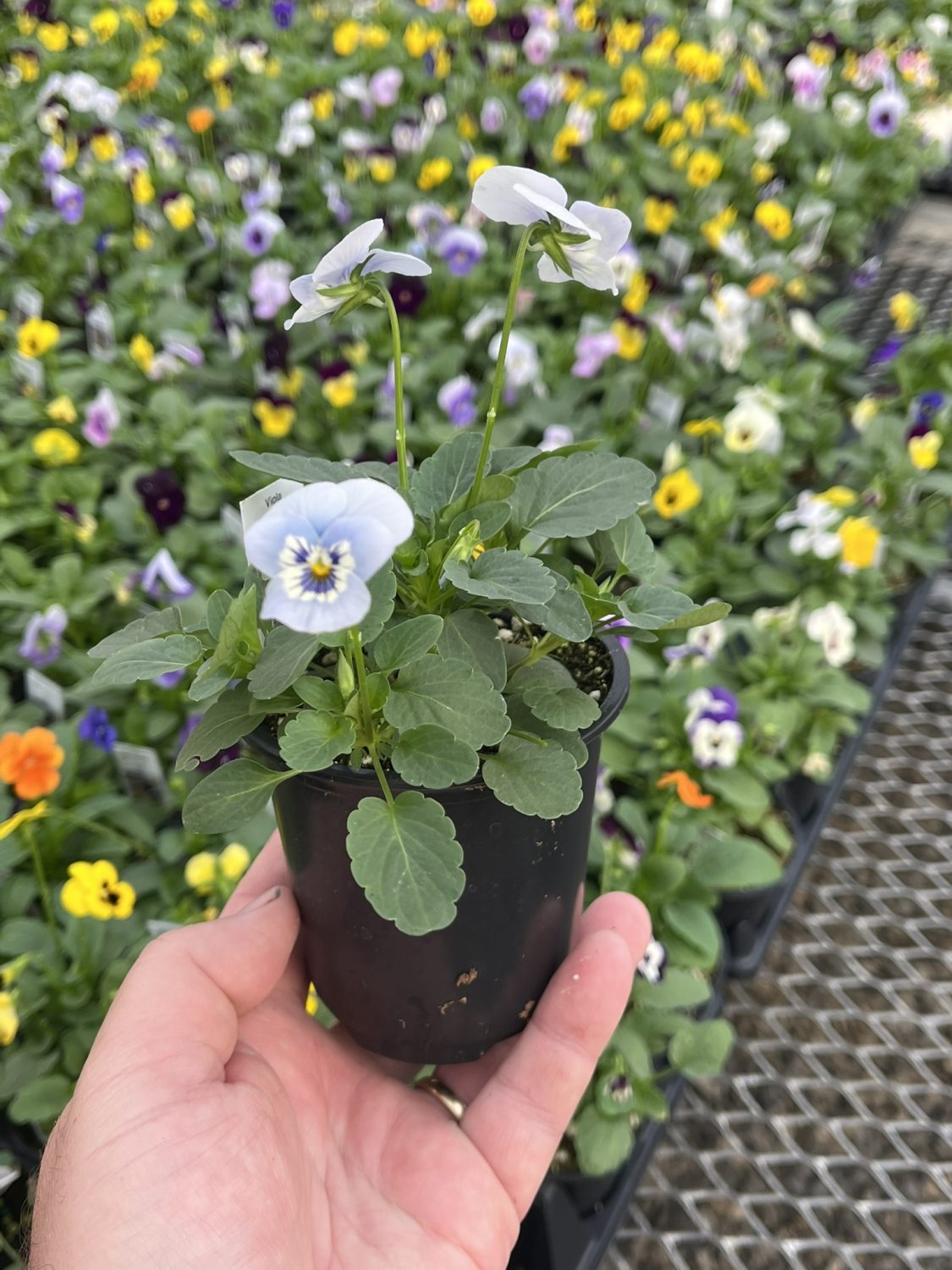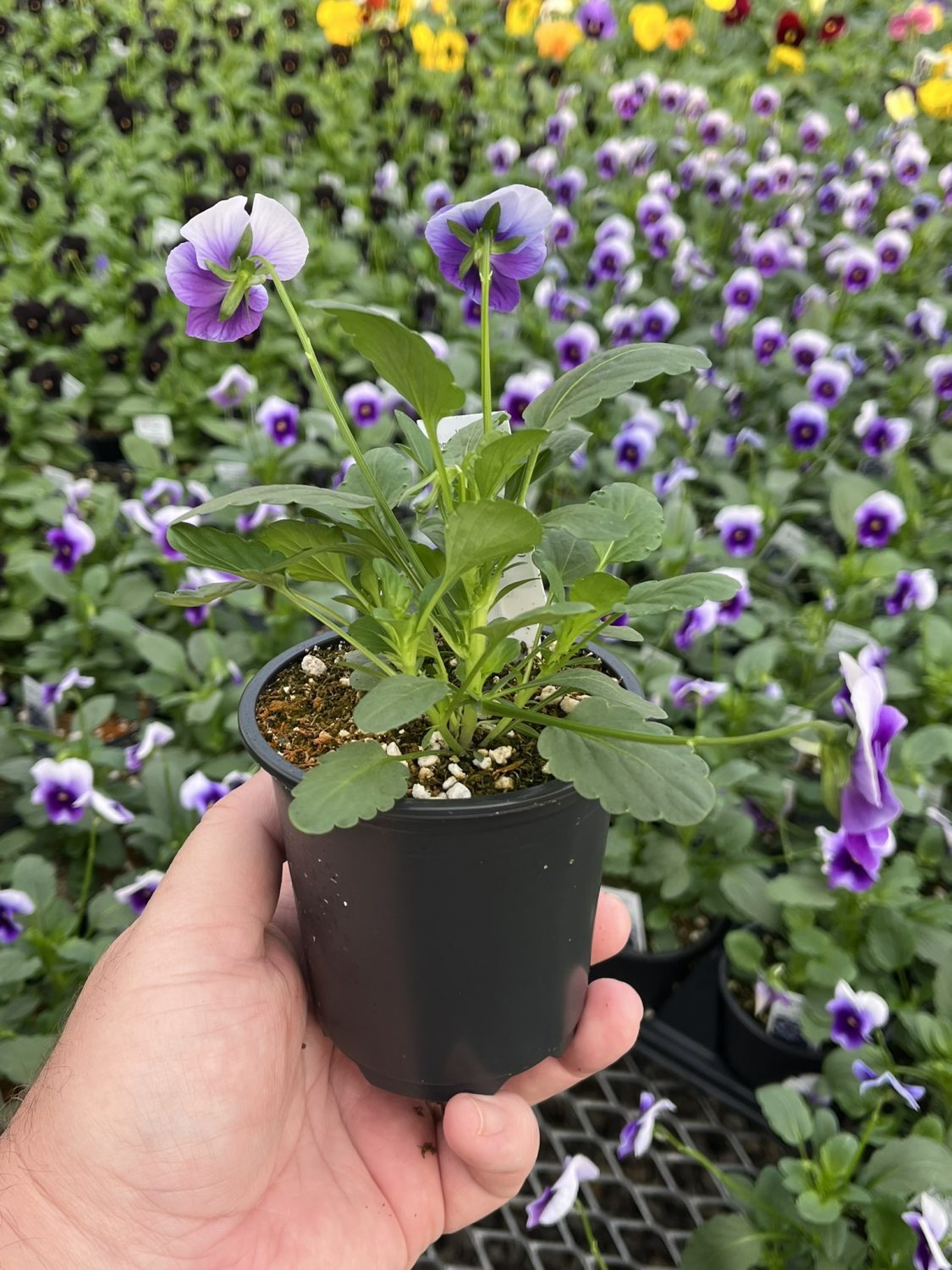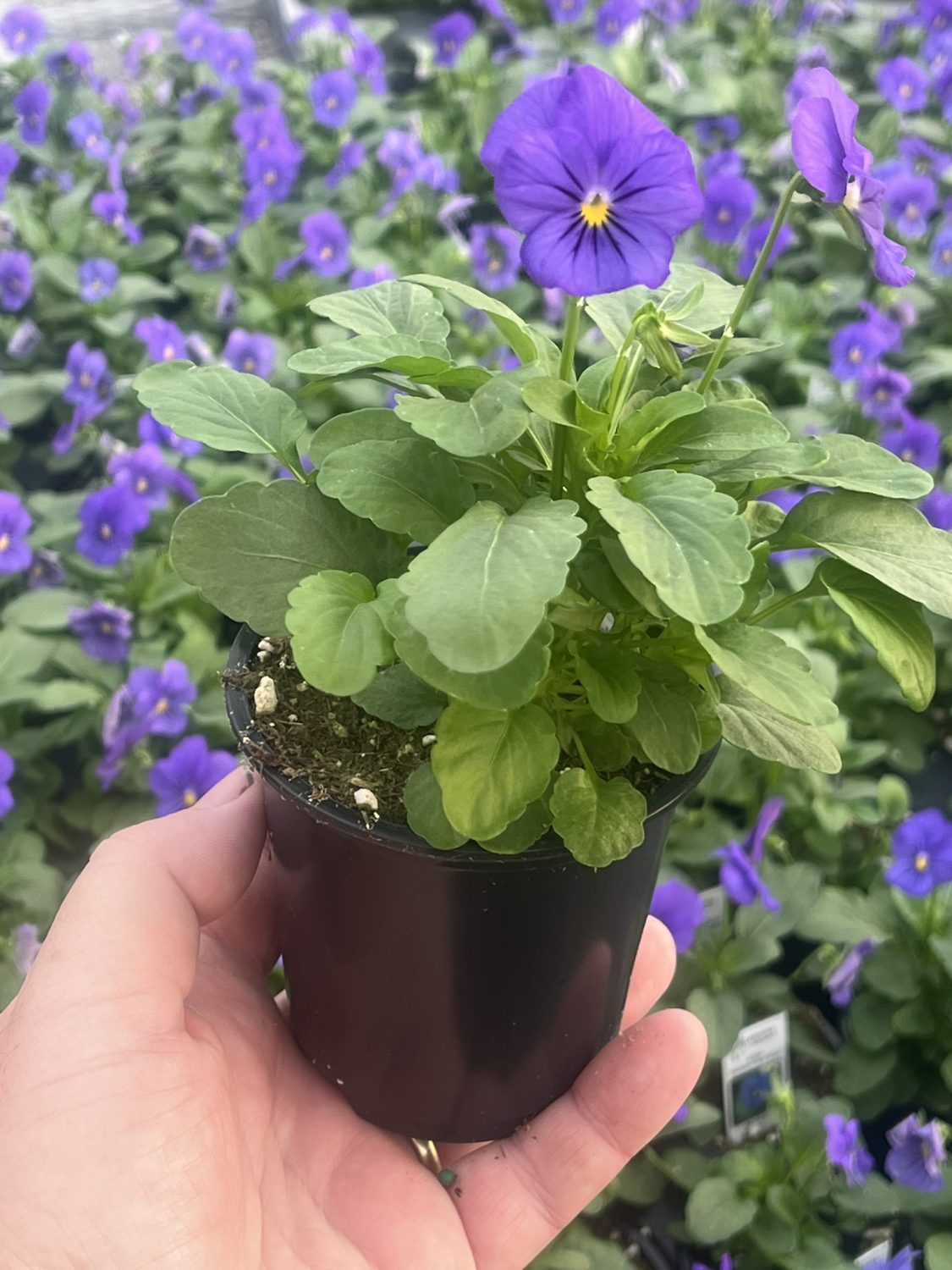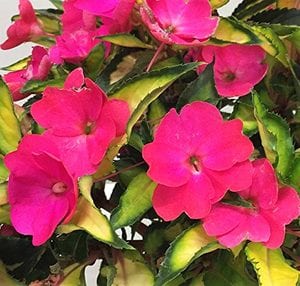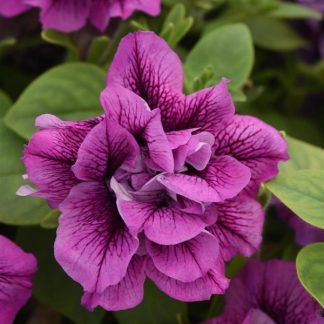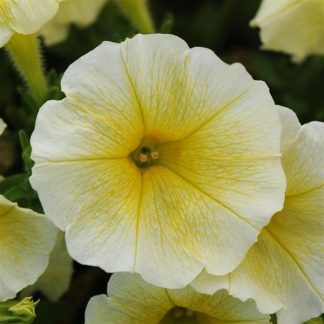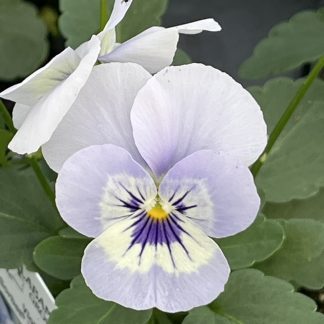Description
Viola ‘Marina’ — Cool Blue Petals with a Breezy, Seaside Calm
Want a bed that feels like a fresh ocean morning? Viola ‘Marina’ brings soft sky-blue petals, a pale face, and fine whiskers that lead your eye to a warm, sunny center. The blooms look hand-painted. The plants stay compact and tidy. And the color reads as calm from a distance and charming up close. In other words, ‘Marina’ gives you the clean, cool look we all love—without any fuss.
In this deep-dive, we’ll cover everything: what makes ‘Marina’ special, how to plant it, and how to keep it blooming for months. We keep the steps simple. We keep the tone friendly. And we focus on wins you can see.
Why We Love Viola ‘Marina’
- True cool blues. Petals shine in soft azure to light denim with a white “face” and delicate whiskers.
- Long bloom window. Fall through spring in mild areas; spring into early summer in cooler zones.
- Tidy, compact shape. Great for borders, front edges, bowls, and window boxes.
- Easy, reliable color. Quick to establish. Steady bloom in cool weather.
- Pollinator-friendly. Early nectar when gardens are waking up.
But most of all, ‘Marina’ brings balance. It softens hot color schemes. It calms bold displays. It pairs with almost anything—from sunny yellows to soft silvers—and makes the whole bed feel intentional.
Plant Profile at a Glance
Botanical group: Viola × wittrockiana (viola/pansy type)
Common name: Viola ‘Marina’
Type: Cool-season annual; short-lived perennial in very mild climates
Height: 6–8 inches
Spread: 8–10 inches
Habit: Low, mounded, and dense
Bloom time: Heaviest in cool months; peak in early spring
Fragrance: Light and sweet on warm afternoons
Foliage: Soft green, rounded leaves that frame the blue petals
In good light, the plants hold their shape and do not sprawl. After more than a few weeks, the mounds knit together into a neat, finished edge.
Where ‘Marina’ Thrives
Light: Full sun to part shade. In warm regions, aim for morning sun with afternoon shade.
Soil: Loose, well-drained, rich in organic matter.
pH: Neutral to slightly acidic is ideal.
Water: Keep evenly moist; never soggy.
Violas love cool roots. A thin mulch—about one inch—helps steady moisture, cool the soil, and reduce weeds. Instead of fighting dry patches, you set the stage for easy growth.
Best Planting Windows by Region
- Cool and cold zones (3–6): Plant in early spring as soon as soil can be worked. You can also plant in early fall, then protect young plants from first hard freezes.
- Moderate zones (6–8): Plant in fall for a winter-to-spring show.
- Warm zones (8–10): Plant in fall for peak color through the coolest months. Add afternoon shade as spring heat builds.
If a hard freeze is forecast, cover new plantings with frost cloth at dusk and remove it in the morning. Simple protection. Big payoff.
Step-by-Step Planting
1) Prepare the bed.
Loosen the top 8–10 inches of soil. Blend in compost to improve drainage and texture. Break any clods. You want a light, crumbly bed.
2) Space for fullness.
Set plants 8–10 inches apart. They fill fast and create a plush carpet of color.
3) Plant at the right depth.
Keep the crown level with the surrounding soil. Firm gently. Water to settle and remove air pockets.
4) Mulch lightly.
Add a thin layer to hold moisture and cool the root zone.
5) First feeding.
Mix a slow-release, balanced fertilizer into the planting area. A little nutrition up front supports steady growth and consistent bloom.
Care That Keeps Blooms Coming
Watering
Aim for even moisture. Let the top inch of soil dry slightly between waterings. Containers may need more frequent checks on bright or windy days.
Feeding
Use a balanced, slow-release fertilizer at planting. Then give a light water-soluble feeding every 4–6 weeks. Little and often is the key.
Deadheading
Pinch off spent blooms and seed pods. This keeps energy going into new buds instead of seeds. Minutes of effort. Months of flowers.
Heat management
As days warm, flowering may pause. Offer afternoon shade and steady water. In many regions, fall plantings give the longest, strongest show.
What Makes ‘Marina’ Stand Out
Blue flowers are rare in nature. ‘Marina’ makes them easy. The petals hold a gentle, sea-breeze blue that never looks harsh. A pale face brightens the center. Fine whiskers lead the eye inward. From the curb, the plants read as a cool, even wash. Up close, each bloom looks like a tiny watercolor. We love how the color stays clean in low light and glows at dawn and dusk.
Design Ideas You Can Copy Today
1) Calm-and-cool border
Pair ‘Marina’ with white alyssum, dusty miller, and silvery herbs. The bed feels airy and bright. It’s peaceful, not flat.
2) High-contrast pop
Set ‘Marina’ against lemon daffodils, butter primroses, or gold-edged heuchera. The blue looks deeper. The border sparkles.
3) Cottage blend
Mix with blush dianthus, lavender, and pale tulips. The palette whispers. The effect is soft and charming.
4) Underplanting bulbs
Tuck ‘Marina’ among tulips, daffodils, and grape hyacinths. As bulb foliage fades, the violas keep the show going. In other words, no awkward gaps.
5) Container highlights
Use a cream, charcoal, or navy pot. Plant 3 starts in a 12-inch bowl with trailing lobelia or ivy and a small grass for height. Instant curb appeal.
Companion Plants That Love the Same Conditions
- Spring bulbs: Tulips, daffodils, hyacinths, muscari
- Cool-season annuals: Pansies, snapdragons, nemesia, stock, sweet alyssum
- Edible accents: Curly parsley, chives, baby lettuce, kale (ornamental or edible)
- Foliage foils: Heuchera (lime or silver), dusty miller, lamb’s ear, blue fescue
These partners echo the cool-season rhythm and let the sea-blue flowers shine.
Growing in Pots, Steps, and Railings
You don’t need a big bed to enjoy ‘Marina’. A sunny stoop is enough.
- Choose a container with a drainage hole.
- Fill with high-quality potting mix.
- Plant 3 plants per 12-inch bowl for a full, finished look.
- Water when the top inch feels dry.
- Rotate the pot weekly so all sides see the sun.
That’s it. Simple steps. Happy plants.
Edible Flower Note
Many violas are used as edible garnishes. If you plan to use ‘Marina’ petals on cakes, salads, or drinks, grow in clean soil and avoid non-edible sprays. Rinse gently. Use fresh. If you grow only for color, enjoy the view and skip the plate.
Quick Answers (Fast and Clear)
How much sun do we need?
Full sun in cool weather. Part shade as heat builds. Morning sun with afternoon shade is ideal in warm zones.
How often should we water?
Keep even moisture. In containers, check daily in bright or windy weather.
Do we need to deadhead?
Yes. Pinching spent blooms keeps flowers coming and prevents seed set.
Will ‘Marina’ reseed?
Sometimes. If you let pods mature, you may see surprise volunteers next season.
Are they deer resistant?
They’re not a top deer favorite, but hungry deer sample almost anything. Use covers or repellents if pressure is high.
Troubleshooting Made Simple
Leggy growth
Likely low light or warmth. Move to more sun or pinch lightly to shape.
Few flowers
Often caused by heat, heavy nitrogen, or skipped deadheading. Add light shade, switch to balanced feeding, and remove spent blooms.
Yellowing leaves
Usually soggy soil or poor drainage. Loosen the bed, refresh mulch, and let the top inch dry slightly between waterings.
Aphids or mites
Rinse with a firm spray of water. Repeat in a few days. Keep plants unstressed with steady moisture and regular, light feeding.
How Many Plants to Order
- Edging: 3–4 plants per linear foot
- Mass bed: 5–7 plants per square yard
- Containers: 3 plants per 12-inch bowl; 5–6 for a 24-inch window box
This spacing creates the lush, carpeted look we all want. Instead of gaps, you get instant fullness.
Simple Care Calendar
At planting: Compost + slow-release feed + water to settle
Weekly: Check moisture; pinch spent blooms
Every 4–6 weeks: Light water-soluble feeding
Before heat waves: Refresh mulch; add afternoon shade if possible
Before hard freezes (new plantings): Cover at night, uncover in the morning
Clip this list and keep it near your potting bench. It keeps you on track all season.
Sustainability Notes We Appreciate
‘Marina’ thrives in shoulder seasons, when water demands are lower than in high summer. It also offers early nectar for helpful insects. Instead of bare beds during cool months, you give pollinators a snack and your garden a soft blue glow. That’s a win for all of us.
Why ‘Marina’ Belongs in Your Cart
We all want plants that work hard and look good. Viola ‘Marina’ does both. It starts fast, stays tidy, and delivers steady bloom in the seasons when color is scarce. It blends with pastels. It pops with golds. It calms bold mixes and elevates simple schemes. After more than one season, you may find it becomes your standard for cool, refined color. We feel that way, too.
Sail Into Soft-Blue Color
Ready to bring that clean, ocean-morning hue to your beds and bowls? Let’s plant Viola ‘Marina’—small mounds, steady flowers, and effortless charm. Easy steps. Big smiles. Seabreeze Petals, Everyday Ease.

